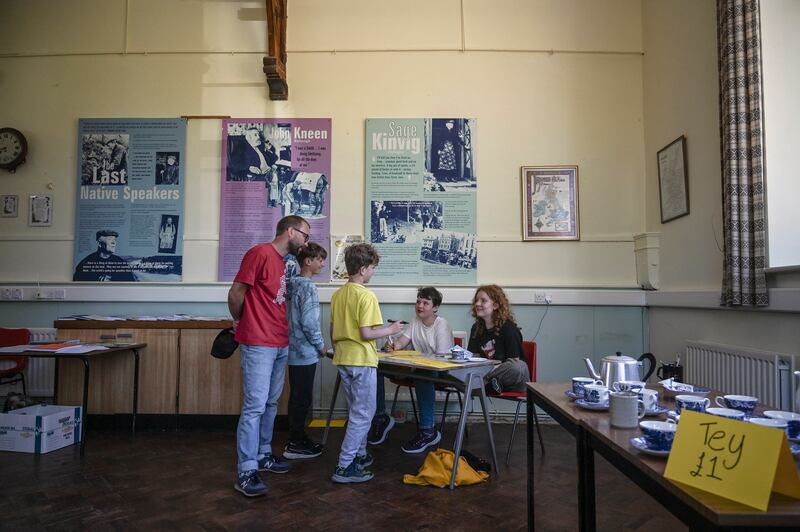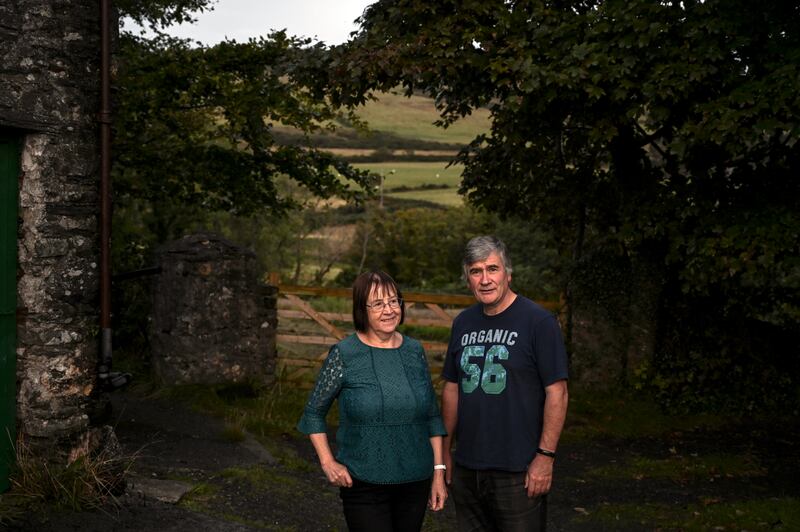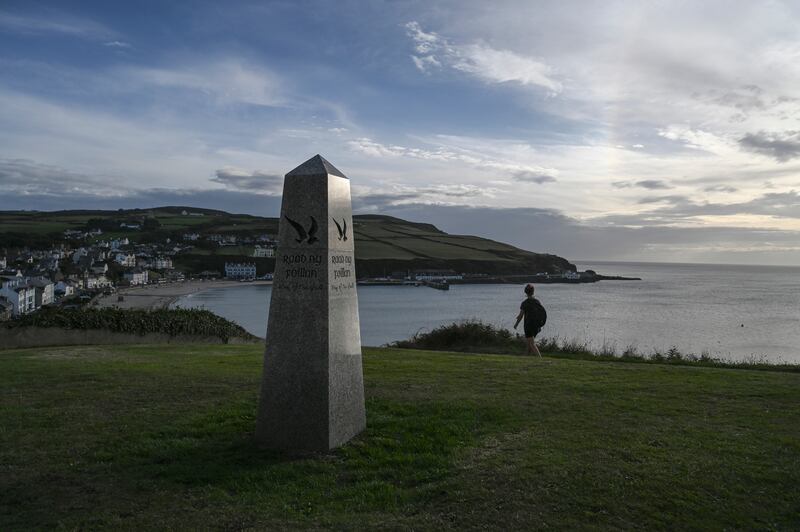The squeals of laughter echoing from the playground sound like any other primary school in its first week back. Listen closely, though, and there’s something rare in the children’s chatter: the Manx language, an ancient tongue once feared forgotten.
But thanks in part to these students at Bunscoill Ghaelgagh, a school on the Isle of Man, the language that was deeply intertwined in hundreds of years of local history is now becoming a part of the island’s future.
It was a little more than a decade ago that Unesco, the United Nations Educational, Scientific and Cultural Organisation, declared the language extinct, and students then studying at the school took strong exception. To make their case that the language was anything but dead, they wrote a letter to the United Nations body – in Manx.
“It sort of was on the brink, but we’ve brought it back to life again,” says Julie Matthews, the head teacher of the school, who notes that her students’ determined effort prompted a new Unesco categorisation of Manx as a “revitalised” language.
READ MORE

On a recent visit to Bunscoill Ghaelgagh, the evidence that Manx is still very much in use was everywhere.
Two girls drawing a clock in chalk on the schoolyard pavement count off one, two, three in Manx: nane, jees, tree. A sign hanging over a tidy row of lunch boxes gives the days of the week in Manx. In a nearby classroom, a teacher delivers a geography lesson in Manx.
The school, with 53 students, is just one of a number of ways the language is being kept alive on the island, which sits in the Irish Sea halfway between Co Down and the Lake District, in northern England.
“We’re trying to make it accessible to everybody, and inclusive,” says Ruth Keggin Gell, the Manx language development officer at Culture Vannin, a foundation established by the government of the island, a self-governing British Crown Dependency that is not a part of the United Kingdom, but whose residents are British citizens.
“It doesn’t matter if you just moved over to the Isle of Man yesterday,” Keggin Gell adds. “If you want to learn Manx, then it’s open to you; likewise, if you have been here all your life.”

While Unesco was incorrect in 2009 when it said that Manx was dead, the mistake was understandable. For centuries, Manx – part of the Celtic language family like Irish and Scottish Gaelic – was how people on the island communicated in their everyday lives. But by the 19th century, the English language had overtaken it, and many on the Isle of Man raised their children to speak only English amid an increasingly derogatory, sometimes even hostile, attitude toward Manx.
However, even as the use of the language was waning, there were people fighting for its preservation. The Manx Language Society was founded as early as 1899, and by the late 1940s there were efforts to record the last native Manx speakers. In the 1960s, the revival efforts began in earnest, and the advent of new technologies has allowed speakers to connect online and to digitise old texts and share Manx music and literature.

The survival of Manx into the 21st century is a testament to the island’s sense of itself as a place apart, with its own identity – and political autonomy.
A reminder of that autonomy is visible just across the street from the Bunscoill: Tynwald Hill, an island gathering spot since at least the 13th century which is still used for an annual open-air meeting of the island’s parliament.
Even though the language is spoken by only a fraction of the population, its imprint is visible virtually everywhere, including tombstones bearing Manx inscriptions, placenames and road signs.
Across the island, people are trying to infuse Manx into their daily lives, with many adults taking Manx lessons and Manx-language bands performing in pubs. Each November, the island hosts the Cooish, a five-day festival of Manx language and culture.

“It does have a snowball effect,” Keggin Gell says of the way the language is being incorporated into island life. “It might be a bit of a slower-growing snowball, but it’s still definitely a snowball.”
About 2,200 people are now able to speak, read or write in Manx, according to the latest census figures, and the government goal is to see that number more than double in the next 10 years.
In the town of Peel, on the western shore of the island, rolling hills give way to a sandy beach. The ruins of a church from the 1500s stand along one street, with an engraving that informs passersby that it “gave service in Manx Gaelic until 1939”. On the front of a purple building on one street corner, a sign over the door reads, “Shamyr Hey” – Manx for tea room.
Phil Gawne, who is 57 years old, and Annie Kissack, who is 63, a married couple, are both fluent Manx speakers; they helped establish the Bunscoill in an old Victorian-era schoolhouse in St John’s, a village in the island’s central valley, near several prominent landmarks.
Gawne grew up knowing a few older relatives who could speak a bit of Manx, but it wasn’t until the late 1970s, he says, when there was an influx of new residents to the island, that he felt the desire to know more about the language.
“I suppose I felt my identity was being threatened quite dramatically because there was this generation of elderly relatives that were dying out,” Gawne says.

The couple, who live on a farm in a small village on the island, decided to raise their two children as Manx speakers in the early 1990s. They started a playgroup with other young parents who were also teaching their children Manx to share the language, which eventually became the educational charity Mooinjer Veggey – or Manx for little people.
“There weren’t any other people other than us and our friends who were actually raising their children as Manx speakers,” Gawne says. “And it’s fair to say that they became what we have described as the first new native speakers.”
When the playgroup’s children were ready for elementary school, the parents lobbied the department of education for Manx language classes. That effort eventually became the Bunscoill, which was officially founded in 2001. Since then, hundreds of students have passed through its doors.

It hasn’t always been easy, from a pedagogical perspective.
Teachers at the school – who included Kissack before she retired two years ago – often have had to create their own learning materials. But over the years, the books and resources available have grown along with the school.
“Over time, things like the access to resources has improved hugely,” Kissack says.
Andrew Traynor, a 38-year-old father of two children at the school – who have had their entire education so far delivered in Manx – says the Bunscoill has been vital in restoring the language and strengthening ties to the island’s culture.
“We get snippets of the Manx at home,” Traynor says. “The history of the Manx language on the island has been such a difficult one, and it’s good that people are picking it up again.”
In some ways, the school feels like a culmination of the decades of efforts to revive the Manx language.
“If I was talking to you 30 years ago, this would be a much different conversation,” Gawne says. “Now, it’s almost accepted that the Manx language must be looked after.” – This article originally appeared in The New York Times

















